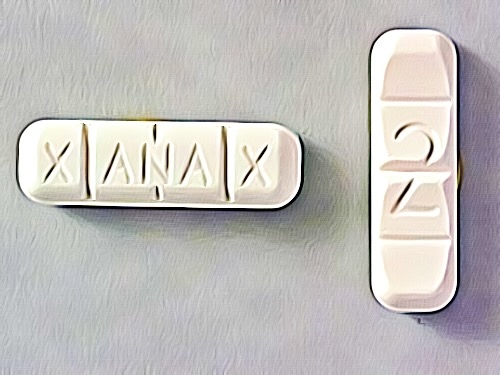Buspirone or BuSpar and Xanax (alprazolam) are FDA-approved anti-anxiety drugs that help treat generalized anxiety disorder. Although both medicines are anxiolytics and can help ease anxiety symptoms, they still both have significant differences.
What Is Buspirone? What Is It Used For?
In 1986, the US Food and Drug Administration approved buspirone as an anti-anxiety medication. Today, it is known as its brand name, BuSpar, and comes in various oral tablets, from 5mg- to 30mg- strength.
Buspirone isn’t a benzodiazepine and isn’t related to barbiturates or other sedatives or anti-anxiety drugs. This drug belongs to the class of azapirones, medications that have both an antidepressant and anti-anxiety characteristics.
As its popularity grew, it now has several off-label uses and is also prescribed to treat post-traumatic stress disorder (PTSD), depression, and teeth grinding related to antidepressants.
Besides that, BuSpar has not only been seen as an effective treatment for anxiety; it is also effective in treating behavioral problems connected to Alzheimer’s disease. In addition, depending on the doses, low consumption of the drug can also help aid movement disorders associated with Parkinson’s disease.
Scientists are still learning as to why buspirone helps lower anxiety. But generally, buspirone affects serotonin and dopamine receptors in the brain, which are key receptors that play a role in anxiety disorders.
If Xanax and other benzos work by binding GABA receptors, buspirone binds our brain’s 5-HT1A receptors. The former blocks the transmission of nerve impulses, creating calming effects. In contrast, benzodiazepines prevent seizure, while buspirone cannot.
Side Effects
Buspirone can cause major side effects that can affect the way you do daily tasks. Here are some of the most common side effects associated with buspirone:
- Drowsiness
- Constipation
- Headache
- Depression
- Stomach pain
- Fatigue
- Numbness
- Weakness
- Nervousness
Unlike other medications and benzos, buspirone, according to the FDA’s drug insert, has no potential for abuse or diversion. Additionally, there’s no evidence that it can trigger physical dependence. However, those who use Xanax can easily develop drug dependency and even progress into Xanax addiction.
The good thing about buspirone is that it is well-tolerated by elderly people, unlike benzodiazepines, which can cause adverse effects on older patients. The latter can trigger major side effects that can put an individual at risk of fractures, falls, and other accidents.
How Does It Compare to Xanax?
Buspirone and other benzodiazepines work to relieve anxiety and its symptoms, but it will only work if taken in the right doses continuously.
According to the American Journal of Psychiatry study, it showed that among the 56 patients with anxiety, there were 18 who received buspirone experienced the same relief as those who received diazepam or valium. But what makes it different from the rest is that buspirone can take longer to work.

Unfortunately, BuSpar can take about a week or two before it kicks in and could take up to six weeks to feel the full clinical effects of the drug. On the other hand, Xanax and other benzos work much faster, and you can feel the effects within an hour since the last dosage.

With that being said, if a patient has previously used other benzos before, you’ll find the buspirone isn’t as effective in treating anxiety issues.
Common Side Effects of Buspirone and Xanax
The two have similar side effects, including headaches, dizziness, lightheadedness, weakness, nervousness, nausea, and even excitement.
Meanwhile, Xanax has other side effects, such as sedation, memory problems, confusion, euphoria, disorientation, dry mouth, vertigo, seizures, vision changes, sexual problems, coma, respiratory depression, GI, and more.
Buspirone and Xanax Abuse
As mentioned earlier, buspirone has “no potential for abuse or diversion” and has no evidence that it can develop into physical dependence. But people who use Xanax have a higher risk of developing dependency and addiction.
Xanax can cause psychological and physical dependence, and as you increase your dose, the risk also increases. In addition, the duration of use and your history of drug and alcohol abuse also play a huge role in Xanax dependency and addiction. This is often seen with patients who receive higher doses of Xanax, such as patients with panic disorders.
Buspirone and Xanax Withdrawal
Like any medication, if you stop taking a drug abruptly, you may experience withdrawal symptoms. With buspirone, even if it kicks in much longer than other drugs, stopping abruptly can cause hazardous withdrawal symptoms. Besides that, you shouldn’t take buspirone with grapefruit as it triggers specific side effects.
Here are the common withdrawal symptoms of buspirone:
- Anxiety
- Tingling or burning sensations
- Nausea
- Muscle cramps
- Neck stiffness
- Insomnia
- Abnormal dreams
- Headache
- Impairment
- Confusion
- Lightheadedness
- Agitation or irritability
- Nervousness
- Fluctuating blood pressure
- Fatigue
- Sedation
- Sweating
- Drowsiness
BuSpar rarely triggers extreme weakness, loss of consciousness, or chest pain. So if you or your loved one is experiencing these severe symptoms, it’s best to seek medical assistance right away.
Xanax — is a central nervous system depressant — targets other parts of your body’s functions and triggers various side effects. This is because it helps by slowing down your heart rate, blood pressure, and body temperature, which helps minimize symptoms of anxiety, stress, and panic.
Within the hour of the last dosage, you can start experiencing withdrawal symptoms and could peak within a day to four days. Here are some of the symptoms that you may experience:
- Blurred vision
- Muscle pain
- Headaches
- Tremors
- Diarrhea
- Numb fingers
- Sensitivity to light and sound
- Loss of appetite
- Insomnia
- Heart palpitations
- Anxiety
- Panic
- Paranoia
- Seizures
Dangers of Abuse: Buspirone vs. Xanax
Several clinical studies suggest that buspirone has low addiction potential. Overall, buspirone, even at 40 mg, won’t reinforce or illicit drug users. Also, a 10 mg dose isn’t discriminable from placebo or 10 mg diazepam.
This is because buspirone doesn’t trigger euphoric feelings, unlike other anti-anxiety drugs. Besides that, buspirone also doesn’t operate on any kind of opiate receptors, making addiction less likely. On the other hand, Xanax is considered addictive and can lead to dependency as well.
The Bottom Line: Finding the Right Treatment to Help Ease Anxiety Symptoms
There’s no denying that anxiety is prevalent in the US. With over 40 million dealing with anxiety, there are different medications in the market targeted in helping ease an individual’s anxiety symptoms.
Buspirone and Xanax are effective anti-anxiety medications, but both must be taken in the right doses continuously to see and feel the effects. However, unlike buspirone with a low addiction possibility, Xanax can lead to dependency and addiction if abused.
Sources:




